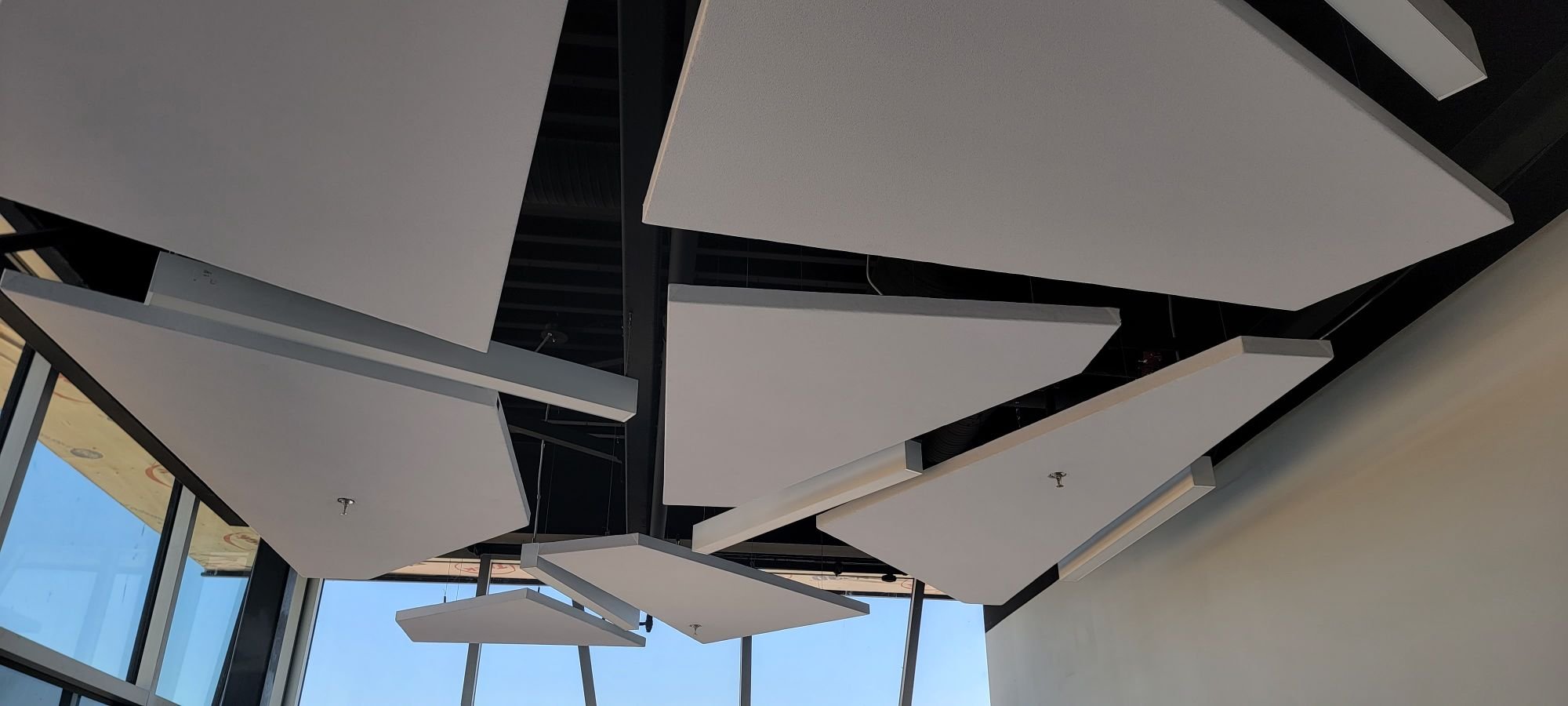Developing Harmony: Acoustic Solutions for a Balanced Setting
Developing Harmony: Acoustic Solutions for a Balanced Setting
Blog Article
Attain Perfect Consistency in your house With Efficient Soundproofing Approaches for Optimum Acoustics
Developing an environment of best consistency in your home entails even more than just the aesthetic appeals of decor and style. Soundproofing plays a vital function in attaining optimal acoustics, affecting the way we experience and interact with our living areas. By understanding the principles of soundproofing, identifying resources of sound disturbances, picking ideal materials, and applying tried and tested techniques, you can transform your home right into a haven of peace where noise boosts instead of disrupts. The journey to understanding soundproofing techniques for perfect acoustics starts with a thoughtful technique that balances functionality and comfort, bring about an immersive acoustic experience that absolutely integrates with your way of life.

Comprehending Soundproofing Fundamentals
Soundproofing is rooted in the understanding of exactly how sound waves travel and communicate with different products. The secret to successful soundproofing lies in disrupting or absorbing these sound waves to reduce their transmission from one space to another.
Comprehending the idea of sound transmission course (STC) rankings is crucial in choosing the ideal products for soundproofing. The STC ranking determines how well a product can lower air-borne sound transmission via it, with greater STC rankings suggesting much better soundproofing capacities. Additionally, thinking about the influence of influence insulation course (IIC) scores for minimizing influence noise, such as footsteps or furnishings moving, can even more improve the performance of soundproofing options.
Analyzing Sound Resources in Your Home
Structure upon the foundational understanding of soundproofing concepts, a vital action in effective sound mitigation within your home includes recognizing and examining the various resources of undesirable sound. Sound sources can be classified right into two primary kinds: air-borne sound, that includes noises like conversations, songs, and television, and effect noise, such as footprints or products being dropped. To evaluate these sources, take into consideration the various rooms in your house and the tasks that generally occur in each. As an example, the living-room might have a lot more air-borne noise from home entertainment systems, while effect sound from footsteps may be a concern in areas with difficult flooring like hallways or cooking areas.
Furthermore, consider external resources of sound, such as traffic, neighbors, or nearby construction, which can additionally influence the acoustics within your home. acoustic solutions. Determining these resources will assist you focus on locations for soundproofing and pick one of the most effective services. By pinpointing the particular noise resources in your home, you can customize your soundproofing efforts to accomplish optimal outcomes and create a more serene and unified living setting
Picking the Right Soundproofing Materials
When selecting soundproofing materials for your home, it is vital to prioritize effectiveness and compatibility with your particular sound worries. Think about factors such as the kind of noise you are trying to obstruct, the level of soundproofing needed, and find more information the visual appeals of the materials to guarantee they mix perfectly into your home.
One usual product for soundproofing is acoustic foam. This lightweight and versatile material is terrific for taking in mid to high-frequency noises, making it optimal for songs spaces, home movie theaters, or workplaces. An additional alternative is mass-loaded vinyl, which is effective in shutting out low-frequency noises like website traffic or equipment sounds. For wall surfaces and ceilings, soundproof drywall is a prominent choice due to its ability to decrease noise transmission in between spaces.
Drapes and rugs made from sound-absorbing materials are likewise efficient in dampening noise, particularly in areas with difficult surfaces that trigger sound to jump around. Remember, the key to effective soundproofing is choosing the appropriate products that address your particular sound concerns while enhancing the overall convenience and acoustics of your home.
Applying Soundproofing Strategies
To effectively execute soundproofing techniques in your home, it is critical to begin by examining the areas that are most vulnerable to sound infiltration. Common resources of sound can include outside audios from traffic, neighbors, or close-by building, in addition to inner sources like devices, plumbing, and amusement systems. Once you have determined these locations, you can start applying soundproofing options customized to each specific area.

For more significant sound decrease, think about mounting soundproof drywall, double-glazed home windows, or durable networks to isolate vibrations. In addition, reorganizing website here furniture, including bookshelves, or incorporating sound-absorbing materials can further enhance the acoustics of an area. By strategically implementing these soundproofing strategies, you can develop a quieter and more peaceful living setting in your home.
Keeping and Improving Acoustic Atmosphere
After applying soundproofing strategies to address noise infiltration in your house, the focus changes in the direction of preserving and enhancing the acoustic setting to make sure a constantly serene space. To maintain optimal acoustics, on a regular basis inspect soundproofing materials for damage, ensuring they continue to be efficient in blocking undesirable sound. Maintain doors and windows properly sealed to stop audio leakage and take into consideration adding weather condition removing or door moves for added soundproofing.
Improving the acoustic setting can entail calculated placement of furnishings, rugs, and drapes to dampen audio representations and echoes. Making use of sound-absorbing materials such as acoustic panels or foam can even more enhance the general sound quality in your house. acoustic solutions. Furthermore, incorporating soft home furnishings like cushions and coverings can help in reducing sound reverberation, creating a more pleasurable auditory experience
Additionally, investing in sound-absorbing decoration find elements like bookshelves, tapestries, or plants can contribute to a balanced acoustic environment. Regularly decluttering your room can also stop acoustic waves from bouncing off surfaces, inevitably improving the total acoustics of your home. By consistently maintaining and boosting your acoustic setting, you can produce a harmonious and tranquil living room for yourself and your family members.
Conclusion
Finally, achieving perfect harmony in your home via efficient soundproofing strategies is necessary for ideal acoustics. By comprehending soundproofing essentials, evaluating sound sources, selecting the ideal materials, implementing methods, and maintaining the acoustic environment, you can create a calm and pleasurable living room free from undesirable noise disturbances. Prioritizing soundproofing initiatives can substantially enhance the overall lifestyle in your house.
Report this page